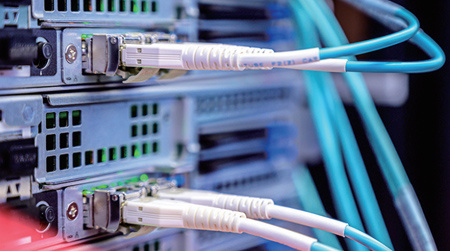22
2025
-
06
Unlocking the Power of Fiber Optic Splitters: What You Need to Know
Understanding Fiber Optic Splitters
Ah, the world of technology! It’s like a rollercoaster ride—exciting and sometimes a bit dizzying. One of the unsung heroes of modern telecommunications is the Fiber Optic Splitter. These nifty devices are crucial for distributing optical signals from a single source to multiple destinations. But what exactly are they, and why should you, as a tech-savvy individual or a curious learner, care?
What is a Fiber Optic Splitter?
In layman's terms, a Fiber Optic Splitter is like a traffic cop at a busy intersection, directing data where it needs to go. It takes a single fiber optic input and splits it into multiple outputs, allowing multiple users to share the same signal. Talk about efficiency, right?
How Do Fiber Optic Splitters Work?
So, how does this magic happen? Well, it all boils down to the principles of light transmission. These splitters utilize a technology called passive optical networking (PON). Basically, light signals travel through the optical fiber, and when they hit the splitter, they are divided into different paths. It's akin to a fountain where water flows out in different directions. Pretty cool, huh?
Types of Fiber Optic Splitters
There are mainly two types of fiber optic splitters: the Planar Lightwave Circuit (PLC) splitters and the Fused Biconical Taper (FBT) splitters. The PLC splitters are more advanced and can handle a larger number of outputs, making them suitable for modern networks. On the other hand, FBT splitters are simpler and a bit less expensive, but they have their limitations. It’s important to choose the right type based on your needs.
Applications of Fiber Optic Splitters
You might be wondering, where exactly are these fiber optic splitters used? The answer is everywhere! From telecommunications and data centers to cable TV and internet service providers (ISPs), they play a pivotal role in ensuring smooth and fast communication. Without them, streaming your favorite shows or video conferencing with colleagues could turn into a frustrating experience.
Benefits of Using Fiber Optic Splitters
Now, let’s dive into the benefits! First off, they greatly enhance the efficiency of networks. By allowing multiple connections from a single fiber line, they save on installation costs and reduce the amount of cabling required—two birds with one stone! Furthermore, they offer superior performance and reliability compared to traditional copper solutions.
Challenges and Considerations
Of course, no technology is without its hiccups. One of the challenges with Fiber Optic Splitters is the potential signal loss—known as insertion loss. It’s essential to consider this when planning your network, as excessive loss can lead to degraded performance. Additionally, installation requires a level of expertise, so it’s best to consult with professionals to avoid any missteps.
The Future of Fiber Optic Technology
As our world becomes increasingly interconnected, the demand for faster and more reliable internet will only grow. Fiber optic technology, with its splitters, will continue to evolve, paving the way for innovations in communication. Just think about it—smart homes, autonomous vehicles, and IoT devices rely heavily on robust connectivity. Fiber optic splitters are at the forefront of this revolution.
Final Thoughts
In conclusion, the Fiber Optic Splitter may not be a household name, but it’s a vital component in the backbone of our digital world. Whether you’re a tech enthusiast or just someone trying to understand the basics of modern networking, knowing about these splitters can really give you an edge. So, the next time you enjoy a seamless streaming experience, give a little nod to the fiber optic splitter—it’s doing its job behind the scenes!
Relevant news
CONTACT US
Add: No.1 Yonghe Third Road, Industrial Functional Zone, Chengdong Street, Yueqing City, Wenzhou City, Zhejiang Province
Tel: +86-577-62315998
Wechat : +86-15067871794
Fax: +86-577-62328331
E-mail: bonnie.chen@ouyahua.com











